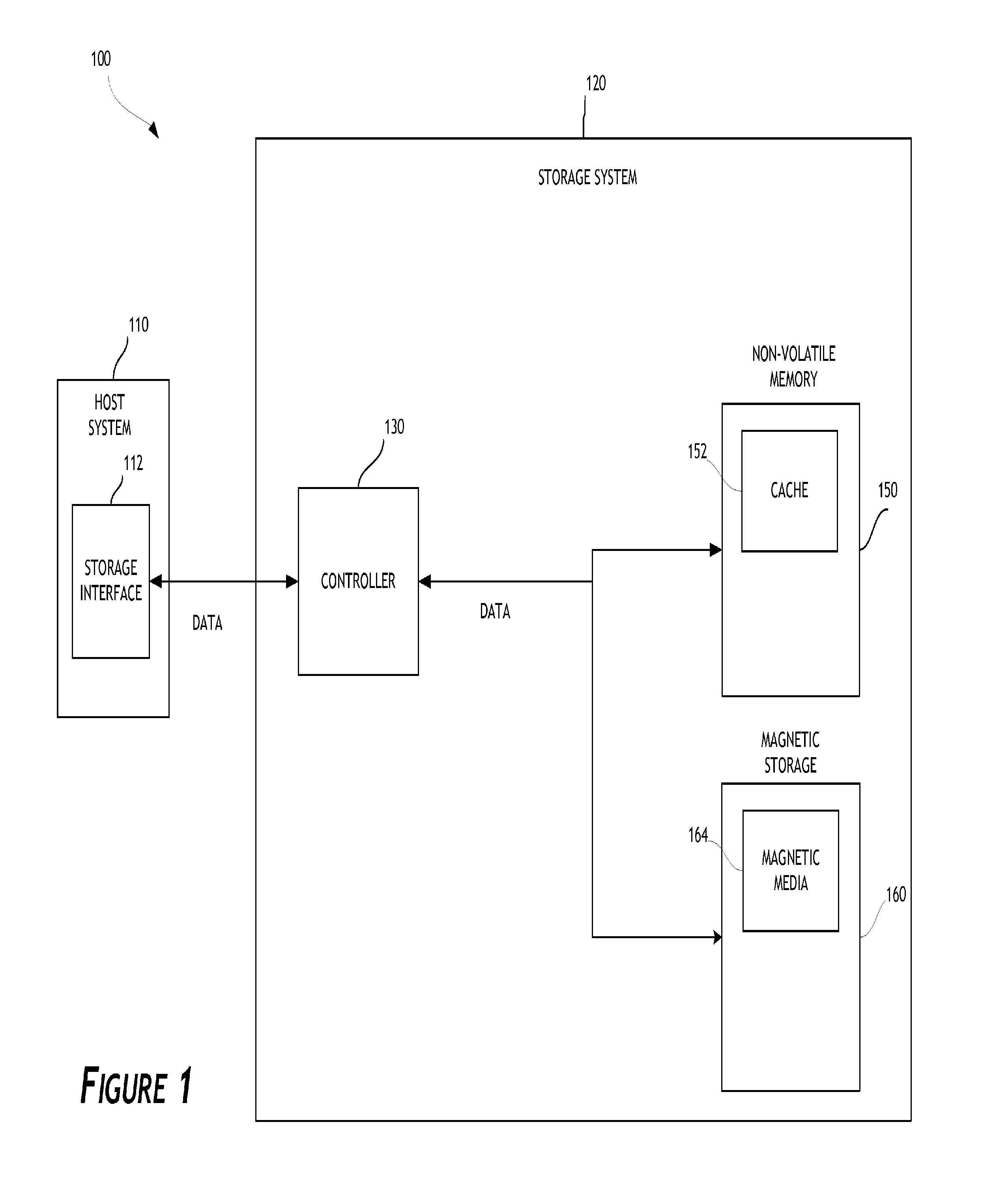Varying data redundancy in storage systems
a data redundancy and storage system technology, applied in the direction of memory address/allocation/relocation, fault response, instruments, etc., can solve the problems of data errors in non-volatile memory devices, non-volatile memory devices can typically endure a limited number of write cycles, and the reliability of non-volatile memory degrades over tim
- Summary
- Abstract
- Description
- Claims
- Application Information
AI Technical Summary
Benefits of technology
Problems solved by technology
Method used
Image
Examples
Embodiment Construction
[0011]While certain embodiments are described, these embodiments are presented by way of example only, and are not intended to limit the scope of protection. Indeed, the novel methods and systems described herein may be embodied in a variety of other forms. Furthermore, various omissions, substitutions and changes in the form of the methods and systems described herein may be made without departing from the scope of protection.
Overview
[0012]Non-volatile memory devices (NVM) (e.g., flash memory and other types of solid-state memory devices) store information in an array of memory cells. In single-level cell (SLC) non-volatile memory, each cell stores a single bit of information. In multi-level cell (MLC) non-volatile memory, each cell stores two or more bits of information. Non-volatile memory has a limited usable life that is measured by the number of times data can be written to a specific NVM location. As NVM wear increases (e.g., number of program-erase cycles increases), the rel...
PUM
 Login to View More
Login to View More Abstract
Description
Claims
Application Information
 Login to View More
Login to View More - R&D
- Intellectual Property
- Life Sciences
- Materials
- Tech Scout
- Unparalleled Data Quality
- Higher Quality Content
- 60% Fewer Hallucinations
Browse by: Latest US Patents, China's latest patents, Technical Efficacy Thesaurus, Application Domain, Technology Topic, Popular Technical Reports.
© 2025 PatSnap. All rights reserved.Legal|Privacy policy|Modern Slavery Act Transparency Statement|Sitemap|About US| Contact US: help@patsnap.com



